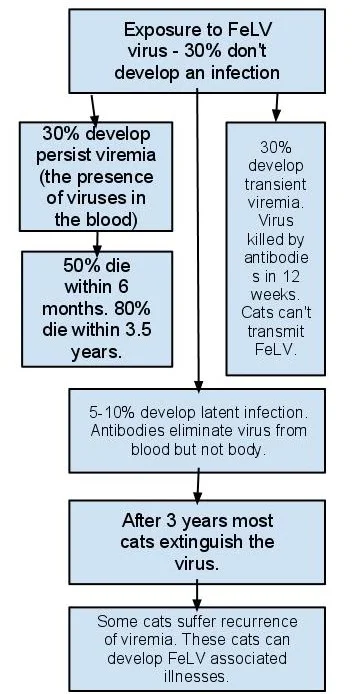 |
| Chart showing how FeLV affects cats Feel free to use it but link back to this page please |
At the time of this post there are two diagnostic tests for an infection of the feline leukemia virus in your cat.
ELISA TEST
The ELISA test detects virus antigen (an antigen is a substance that causes an immune response) in the cat's whole blood, serum, saliva and tears. It detects early and transient infections.
There is a home test kit for this, which I think is useful to reassure cat keepers especially those with multi-cat households where up to 30 percent of cats can be infected. It is expensive but so is going to the veterinarian. And they will probably try and sell you something else.
IFA TEST
This test is carried out by laboratories. It "detects virus antigen in infected white blood cells". If present the cat's bone marrow is infected. This indicates a persistent viremic state. In turn this means the infected cat is shedding the virus making him or her infective to other cats. A positive IFA test indicates that the cat will remain viremic (virus in the blood) for life.
Screening is carried out by the ELISA test and if positive it is followed by with the IFA test.
Reference: Cat Owners Home Veterinary Handbook - ISBN 978-0-470-09530-0
From Diagnosing and Testing for FeLV to Home Page

No comments:
Post a Comment
Your comments are always welcome.